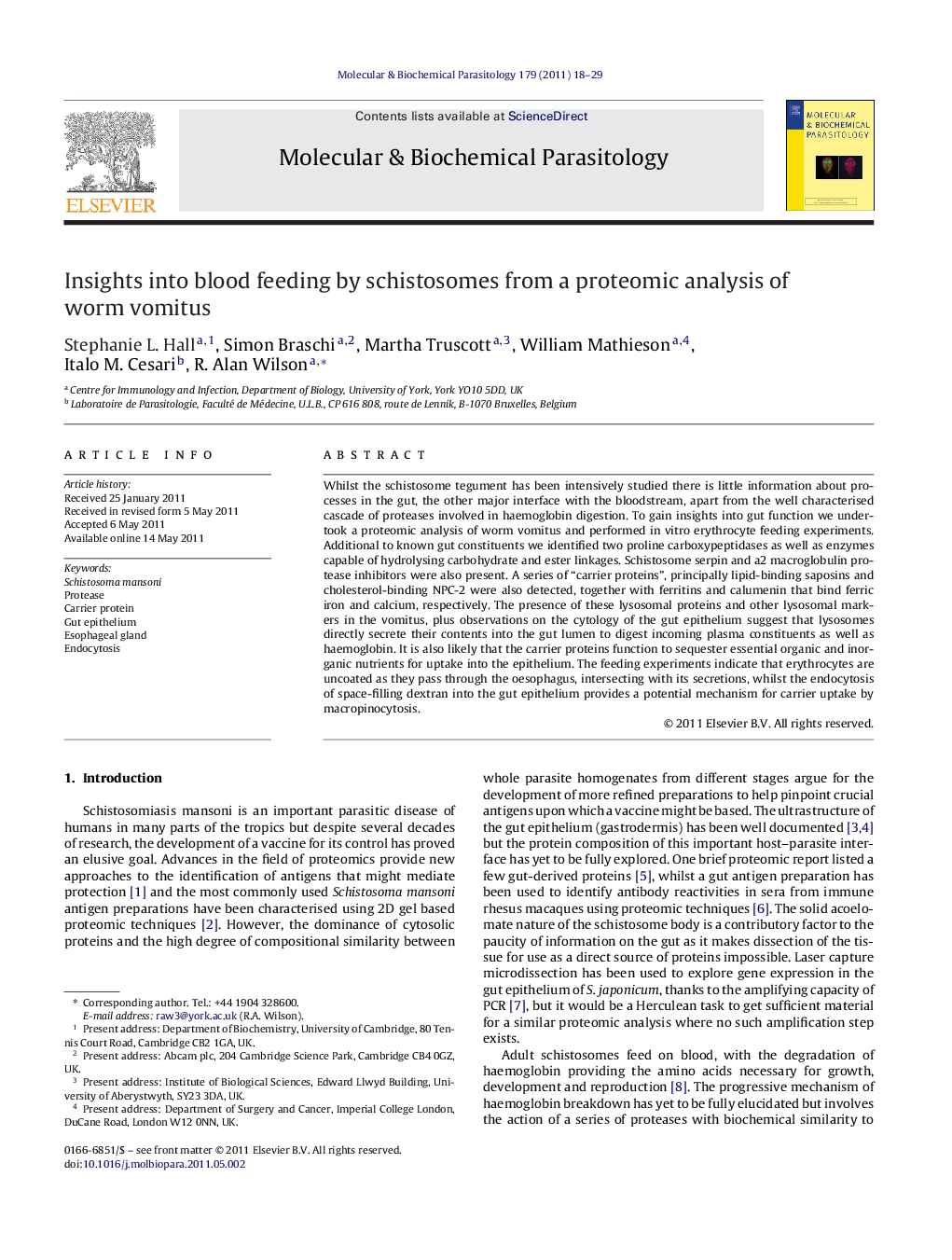| Article ID | Journal | Published Year | Pages | File Type |
|---|---|---|---|---|
| 5915650 | Molecular and Biochemical Parasitology | 2011 | 12 Pages |
Whilst the schistosome tegument has been intensively studied there is little information about processes in the gut, the other major interface with the bloodstream, apart from the well characterised cascade of proteases involved in haemoglobin digestion. To gain insights into gut function we undertook a proteomic analysis of worm vomitus and performed in vitro erythrocyte feeding experiments. Additional to known gut constituents we identified two proline carboxypeptidases as well as enzymes capable of hydrolysing carbohydrate and ester linkages. Schistosome serpin and a2 macroglobulin protease inhibitors were also present. A series of “carrier proteins”, principally lipid-binding saposins and cholesterol-binding NPC-2 were also detected, together with ferritins and calumenin that bind ferric iron and calcium, respectively. The presence of these lysosomal proteins and other lysosomal markers in the vomitus, plus observations on the cytology of the gut epithelium suggest that lysosomes directly secrete their contents into the gut lumen to digest incoming plasma constituents as well as haemoglobin. It is also likely that the carrier proteins function to sequester essential organic and inorganic nutrients for uptake into the epithelium. The feeding experiments indicate that erythrocytes are uncoated as they pass through the oesophagus, intersecting with its secretions, whilst the endocytosis of space-filling dextran into the gut epithelium provides a potential mechanism for carrier uptake by macropinocytosis.
Graphical abstractTransfer of PKH2 cell membrane label to the modified tegumental lining of the schistosome oesophagus in adult males reveals the site where ingested erythrocytes are uncoated during blood feeding.Download high-res image (80KB)Download full-size imageHighlights⺠A culture method for producing vomitus not contaminated by cytosolic proteins. ⺠Finding hydrolases that digest blood constituents other than haemoglobin. ⺠Finding carrier proteins that bind lipids, sterols and inorganic ions for uptake. ⺠Demonstration that erythrocytes are uncoated as they pass through the oesophagus. ⺠Macropinocytosis of dextran by the gut epithelium.
